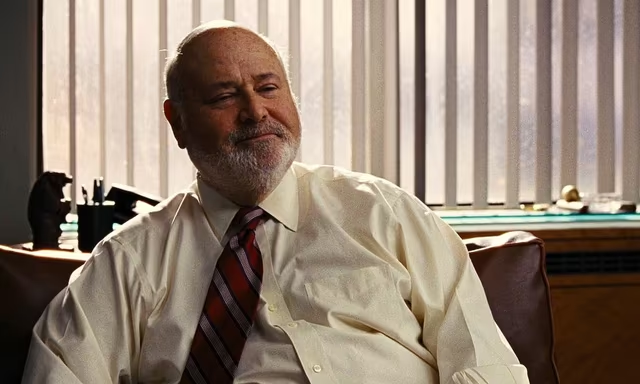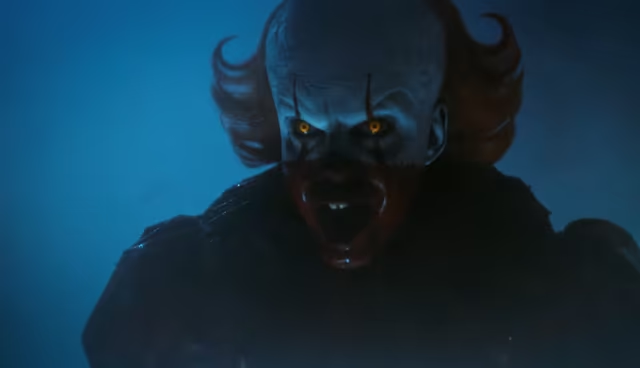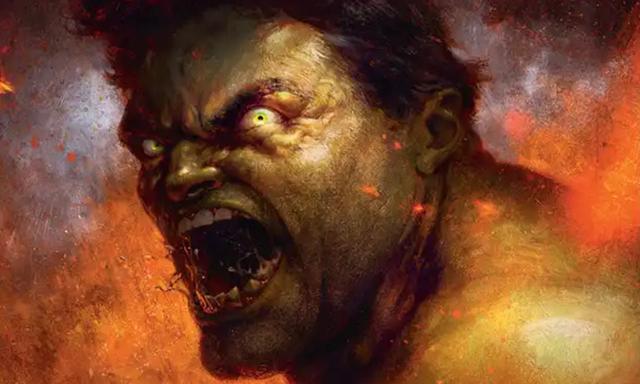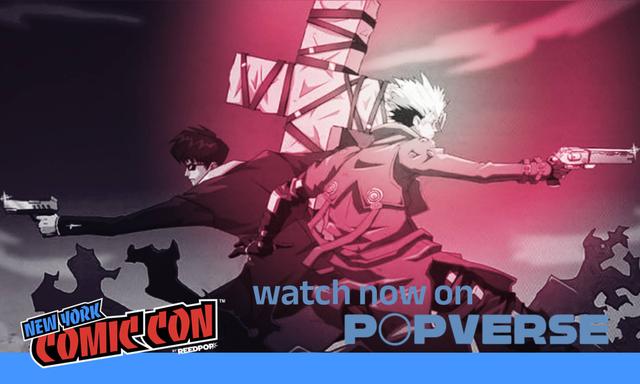If you click on a link and make a purchase we may receive a small commission. Read our editorial policy.
The 10 most essential Thor comics of all time
A reading guide for those who are interested in getting to know the God of Thunder a bit better

Out of Norse mythology and into the pages of Marvel Comics, meet the mighty Thor! He’s a god, a prince, an Avenger, and a practicing doctor! Hailing from Asgard, realm of the gods, Thor has been a champion for justice ever since his debut in 1962’s Journey into Mystery #83. Powered by his hammer Mjolnir, Thor is able to weaponize lightning, which is why they call him the God of Thunder.
Created by Stan Lee and Jack Kirby, Thor has gone on to become one of Marvel’s most popular characters. He’s appeared in numerous comics, television shows, video games, and movies. This year the God of Thunder will be celebrating 50 years in comics, and what a fantastic five decades it’s been. From battling a God Butcher to turning into a frog, here are 10 of the greatest Thor comics ever published.

10 – ‘The Surtur Saga’ by Walt Simonson (Thor #341-353 , 1984)
For years the fire giant known as Surtur has been biding his time, waiting for the perfect moment to strike. Now the demonic villain is ready to enact his plan, which could spell the end of Asgard, realm of the gods. Armed with a powerful new sword named Twilight, Surtur launches attacks on Asgard and Earth. It’s a family reunion as Asgard’s ruler Odin fights alongside his sons Thor and Loki to defend his realm, but will their combined forces be enough?
‘The Surtur Saga’ is one of the high points of Walt Simonson’s iconic run. The legendary creator did double duty on this comic, writing and drawing the God of Thunder’s struggle against Surtur. The rising tension builds perfectly as Simonson eerily shows Surtur preparing for war with the repeated sound effect “doom.” This all leads to an exciting conclusion with some of the most vibrant and imaginative action sequences ever depicted in a Thor comic. The stakes are high, and so is the quality!
9 – ‘Ragnarok’ by Michael Avon Oeming, Daniel Berman, and Andrea DeVito (Thor #80-85 , 2004)
Years ago, Odin saw a vision of an event called Ragnarok, which would bring the destruction of Asgard and the end of the gods. Now it looks like that prophecy is coming to pass. With the help of Surtur, Loki now has an arsenal of hammers forged out of the same material as Mjolnir, making him deadlier than ever. Loki tears through Asgard with his army, and it’s up to Thor to stop him. But how far is the God of Thunder willing to go to end the cycle of Ragnarok?
If ‘Ragnarok’ had been the last Thor storyline ever published, it would have been a fitting series finale. Michael Avon Oeming and Daniel Berman’s script throws everything at the reader, killing major characters, gouging Thor’s eyes out, and beheading Loki. DeVito’s illustrations match the intensity of the script, giving readers some unforgettable images. Parts of this storyline were used as the basis for the 2017 film Thor: Ragnarok, and it isn’t hard to see why. ‘Ragnarok’ is a perfect love letter to the mythology Stan Lee and Jack Kirby created in the Silver Age.

8 – ‘Twilight of the Gods’ by Mark Gruenwald, Ralph Macchio, and Keith Pollard (Thor #300 1980)
The gods of Asgard may be powerful, but their strength Is nearly eclipsed by the ancient lifeforms known as the Celestials. As the Celestials deliberate over the fate of Earth, Odin battles these powerful beings. When Odin falls, it’s up to Thor to stop the Celestials. The battle rages on, with Thor barely landing a hit. However, nobody is prepared for the arrival of the goddess Gaea, and the revelations she brings with her.
‘Twilight of the Gods’ is high fantasy that raises the stakes for Thor. The God of Thunder has faced defeat before, but facing the Celestials was a different story. It's almost like watching an insect battle a lion. It’s hard to imagine Thor as playing the role of David against Goliath, which makes this issue even more gripping. Gruenwald, Macchio, and Pollard pull out all the stops to celebrate this centennial issue, and the result is one of the most exciting adventures the title has ever seen.
7 – ‘The Ballad of Beta Ray Bill’ by Walt Simonson (Thor #337-340 , 1983)
An alien named Beta Ray Bill arrives on Earth, proving to be more than a match for Thor. The God of Thunder is defeated and reverts back to his human identity of Donald Blake. This sets the stage for some chaos when Beta Ray Bill lifts Mjolnir and is transformed into Thor. Now that Beta Ray Bill has this power, he doesn’t want to give it up, which doesn’t sit well with Donald Blake.
‘The Ballad of Beta Ray Bill’ kicks off Walt Simonson’s critically acclaimed run on Thor. This storyline introduced Beta Ray Bill, an alien-cyborg who has become a fan favorite character. Another character picking up Mjolnir and gaining the power of Thor was unheard of in mainstream continuity, making Simonson’s first outing daring and memorable.

6 – ‘Mjolnir’s Song’ by Walt Simonson (Thor #380, 1987)
A prophecy has foretold that Thor would meet his end battling the serpent Jormungand. Of course, the God of Thunder doesn’t fear any prophecy, so he takes on Jormungand anyway. Despite being weakened by a curse, Thor battles bravely. In the end Jormungand falls, but so does the God of Thunder. Curiously, his armor lays on the ground empty.
If you love epic battles, then ‘Mjolnir’s Song’ will quickly become one of your favorite Thor stories. The entire issue is a continuous fight scene with no subplot pages, and the action never slows down. The story is told using single panel pages, making the fight seem that much grander. The narration from Simonson is pure poetry, the framing is unique, and the inks from Sal Buscema enhance the beauty of Walt’s pencils. This is how you do a Thor comic.
5 – ‘To Wake the Mangog’ by Stan Lee and Jack Kirby (Thor #154-157, 1968)
A demonic monster named Mangog escapes captivity and sets his sights on Asgard. Things couldn’t have come at a worse time, as Odin has just entered his yearly hibernation known as Odinsleep. Loki takes advantage of this chaos to assume control of Asgard’s throne, but if Mangog has his way there won’t be a kingdom left to rule. It’s up to Thor and his allies to defeat Mangog before the seemingly unstoppable foe ushers in Ragnarok.
There’s something magical about a Stan Lee and Jack Kirby comic. When the two of them collaborate on a story, the results are breathtaking. By 1968 Lee and Kirby had been crafting Thor stories for six years, which means they now had a good idea of who the character was and how to tell interesting stories in his world. ‘To Wake the Mangog’ is Lee and Kirby at the height of their creativity, building mythology while mixing action with drama. The result is an exciting saga with a thrilling script and gorgeous illustrations.

4 – ‘The God Butcher’ by Jason Aaron and Esad Ribic (Thor: The God of Thunder #1-5, 2012)
Thor discovers that someone is butchering gods, and it may be an enemy that he thought he had destroyed centuries ago. Long ago Thor battled a being called Gorr, who sought to kill every god across the cosmos. The God of Thunder thought he had slain the God Butcher, but Gorr survived and has been building a huge body count under everyone’s nose. Elsewhere, an older version of Thor sits in a fallen kingdom, waiting for Gorr’s forces to finish him off once and for all. Is this the future that awaits the God of Thunder, or can the God Butcher’s rampage be stopped?
Jason Aaron is probably the most consequential Thor writer of this generation, and this is where his run begins. ‘The God Butcher’ mixes the slasher flick genre with ancient mythology, as Gorr fillets gods across space and time. Speaking of time, the storyline follows Thor throughout three different eras, a fun narrative device that comes together beautifully. Esad Ribic’s illustrations are breathtaking and cinematic. Interestingly, the scene where Thor looks upon the corpse of the fallen god Falligar was recreated in the Thor: Love and Thunder film trailer. ‘The God Butcher’ took the God of Thunder in a bold new direction, revitalizing the character for a new generation.

3 – ‘Thor Croaks’ by Walt Simonson (Thor #364-366)
In a creative bit of mischief, Loki transforms Thor into a frog. The God of Thunder retains his god-like strength but is unable to communicate with any humans. As he seeks a way to regain his original form, Thor finds himself drawn into a war between the frog and rats of Central Park. Thor must help the frogs find victory, dodge alligators, regain Mjolnir, and defeat his brother Loki – all while in frog form!
Thor has always been a character that has taken himself too seriously, so it’s refreshing to see a story embrace light-hearted absurdity. Thor turning into a frog is a silly concept, which is exactly why it works so well. Seeing a frog talk like Thor, use god-like strength, and wield Mjolnir is a fun reading experience. Although the concept is humorous, Thor remains the straight man (or straight frog) throughout the story, which only adds to the fun. The story is another Walt Simonson classic, blending a fantasy adventure script with lively illustrations.

2 – ‘Goddess of Thunder’ by Jason Aaron, Russell Dauterman, and Jorge Molina (Thor #1-5, 2013)
After a mysterious whisper from Nick Fury, Thor finds that he’s no longer worthy and has lost the ability to lift Mjolnir. The powerful hammer sits on the moon unable to be moved until an unseen woman lifts it. The woman becomes Thor and uses the power of Mjolnir to protect life on Earth. When the original Thor learns of his successor, he tracks her down demanding she relinquish the hammer and the title.
This story inspired many of the elements that will be featured in the upcoming Marvel Studios film Thor: Love and Thunder. This comic famously took the mythology in a bold new direction by transforming Thor’s former love interest Jane Foster into the Goddess of Thunder. This daring status quo change electrified readers, bringing new attention to the title. But don’t confuse this with a gimmick, Jane’s time as Thor was so much more than that. This storyline dives into questions of worthiness, the price of heroism, and legacy.
1 – ‘Tales of Asgard’ – by Stan Lee and Jack Kirby (Journey into Mystery #97-125 and Thor #126-145, 1963)
When did Thor first wield the power of Mjolnir? Why does Asgard have a rainbow bridge? How did Loki’s rivalry with Thor begin? Discover the answer to these questions as you dive into the legacy of Asgard and learn about the backstory of Thor and the kingdom of Asgard in a fantastical series of fables.
‘Tales of Asgard’ was a series of short backups that built out the mythology surrounding Thor, his world, and his supporting cast. For an easier reading experience, these backups have been collected various times, including the six issue 2009 limited series Thor: Tales of Asgard. These were more than entertaining stories; they changed the entire direction of the character. Prior to ‘Tales of Asgard’ Thor was another Marvel superhero whose stories weren’t that different from his Avengers contemporaries. ‘Tales of Asgard’ leaned into the fantasy elements of Thor’s backstory, changing the character for the better. Everything you need to know about Thor and his world can be found in these backups. In fact, it can be argued that ‘Tales of Asgard’ built the foundation for almost every story that has been published since.
An odyssey of an adventure
These are just 10 of the greatest storylines Thor has starred in. With 50 years of publishing under his belt, the God of Thunder has no shortage of classic comics to dive into. Whether you love fantasy, action, or drama, there is a Thor comic out there that will get you hooked. As you turn each page, you’ll feel like you’re experiencing an exciting odyssey of adventure. That’s the magic of Thor comics, and I hope this list helps you begin your journey.
Interested in reading more about modern Thor comics? Check out this Popverse piece about how Jason Aaron's thor stories changed the God of Thunder forever.
Follow Popverse for upcoming event coverage and news
Find out how we conduct our review by reading our review policy
Let Popverse be your tour guide through the wilderness of pop culture
Sign in and let us help you find your new favorite thing.
















Comments
Want to join the discussion? Please activate your account first.
Visit Reedpop ID if you need to resend the confirmation email.